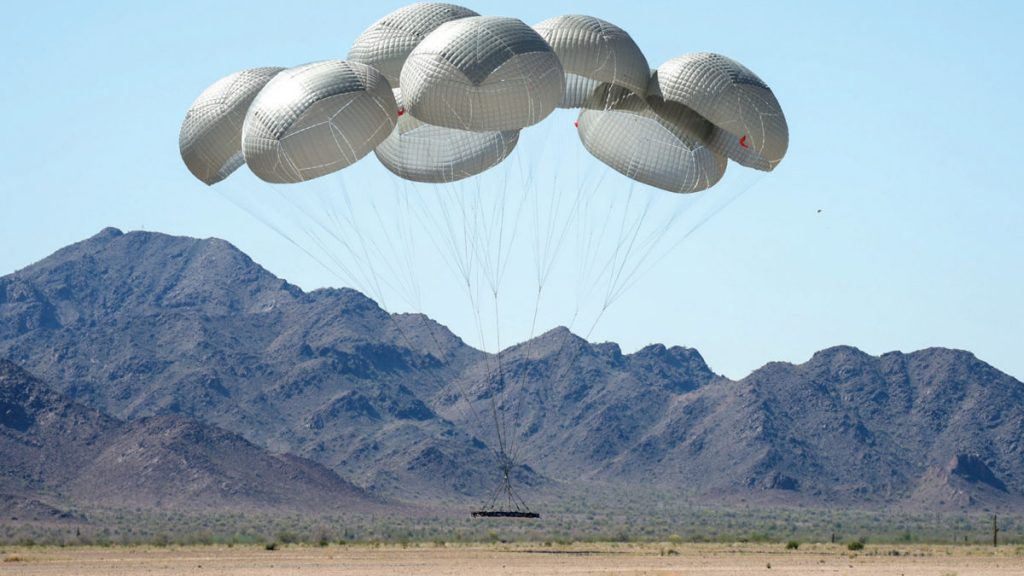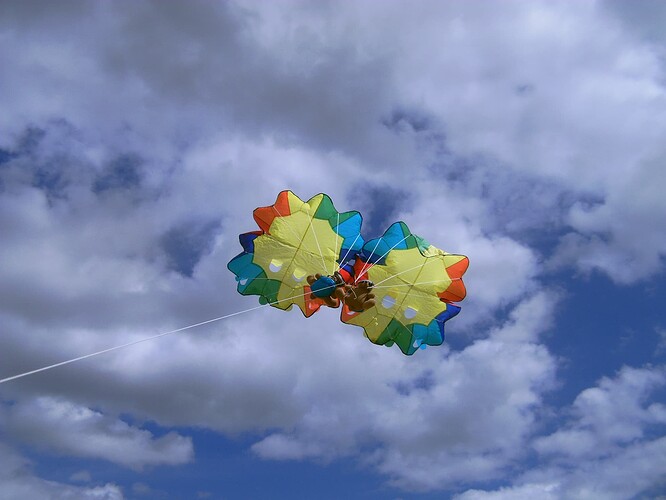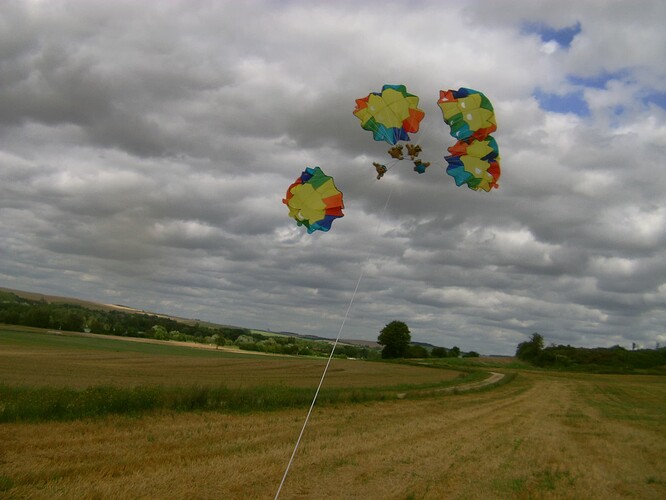It is reasonable to think that the same would be true for parasails: decrease in Cd when wind speed increases. In any case, this is what a research group tried to demonstrate:
https://eng-web1.eng.famu.fsu.edu/me/senior_design/2007/team4/Analysis_&_Results.html
The parasail was found to have a drag coefficient of slightly less than the estimated value. The textbook drag coefficient for a parachute is about 1.3 while the test showed a drag coefficient of approximately 1.2 for the two out three most accurate tests. The drag coefficient was very high at 1.7 for the 90 lb test weight. A likely reason for this is that the drag coefficient seemed to decrease as wind speed increased. The wind speeds for the 90 lb test included values of below 10 mph with abnormally high tension readings. These raised the value for the average drag oefficient. These results could be erroneous due to bad recording conditions but it is also possible that the behavior of the parasail is not as predicted in the theoretical calculations. If the drag coefficient of the parasail does in fact decrease with an increase in wind velocity, this could be very beneficial for the safety of the entire system. A dangerous high velocity gust would have a lesser effect than what was previously expected. For the purpose of safety, however, it will be assumed that the drag coefficient will not decrease below the value recorded at our maximum test speed of 25 miles per hour.
“The wind speeds for the 90 lb test included values of below 10 mph”, so comparable to the sink rate of rescue parachutes. This looks to confirm that at wind speed of 10 m/s or more, the drag coefficient (Cd) would be lower (in this excerpt, a Cd of 1.2 is noted).
A representative photo of tests on Eglin 4 - FSU ME Senior Design Project :







